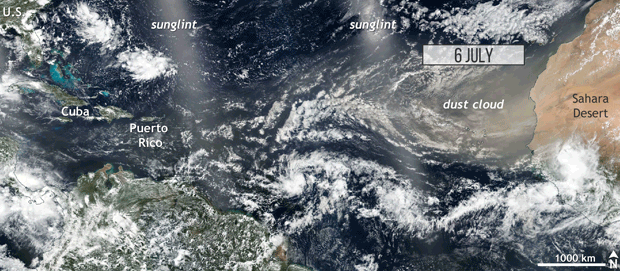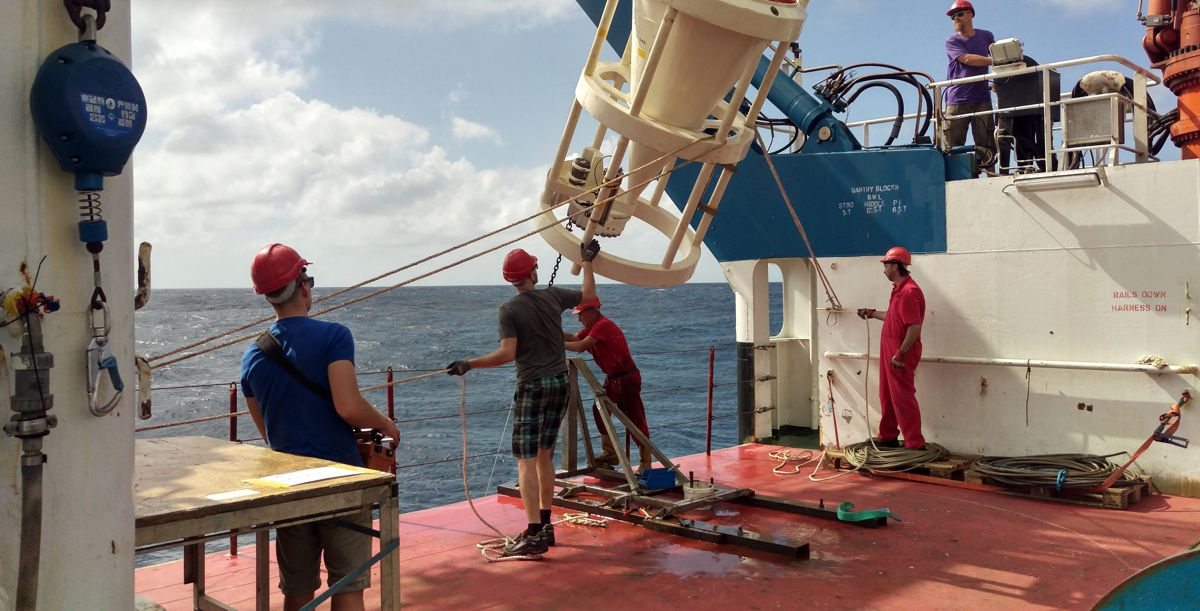
The data presented in this study, were retrieved from a series of sediment traps that were deployed along a transect across the equatorial North Atlantic at 12oN between 2012 and 2014. Saharan dust was isolated from the sediments in these traps and the amounts were determined. The first novelty presented in this paper is the fact that the fluxes of the actual dust are used, instead of the commonly used so-called non-soluble fraction or rest fraction. Typically, this rest-fraction is calculated after chemical removal of the marine biogenic fractions from the bulk sediments as in:
Insoluble fraction = bulk - (organic fraction + calcium-carbonate fraction + biogenic silica fraction).
Van der Does and co-workers neatly show that this established method is significantly improved by weighing the rest fraction after chemical removal of the biogenic fractions.
In addition, the paper describes how modelling of Saharan-dust deposition across the Atlantic Ocean shows the dominance of wet deposition caused by rain washing the atmosphere clean. The fraction wet-deposited dust significantly increases from East to West across the Atlantic Ocean. This also implies that dust can travel across the Atlantic Ocean only if it is not washed out by rain on the way towards the West.
Another thing that can be learned from the paper is the large difference between dust transport (as observed by satellite imagery and derived from dust collectors) and actual dust deposition (as recorded by sediment traps).

Click here to view the paper on AGU's GRL website